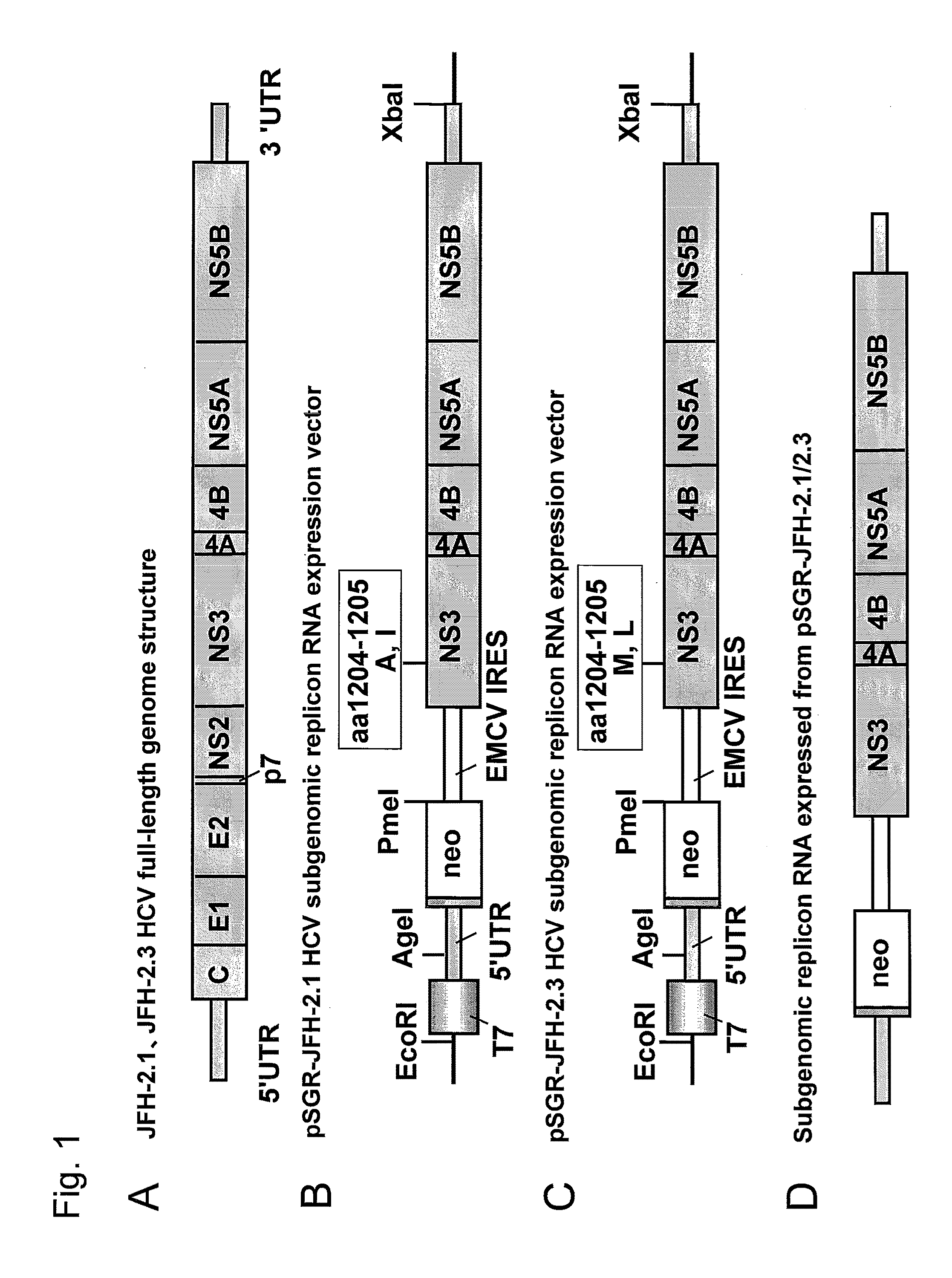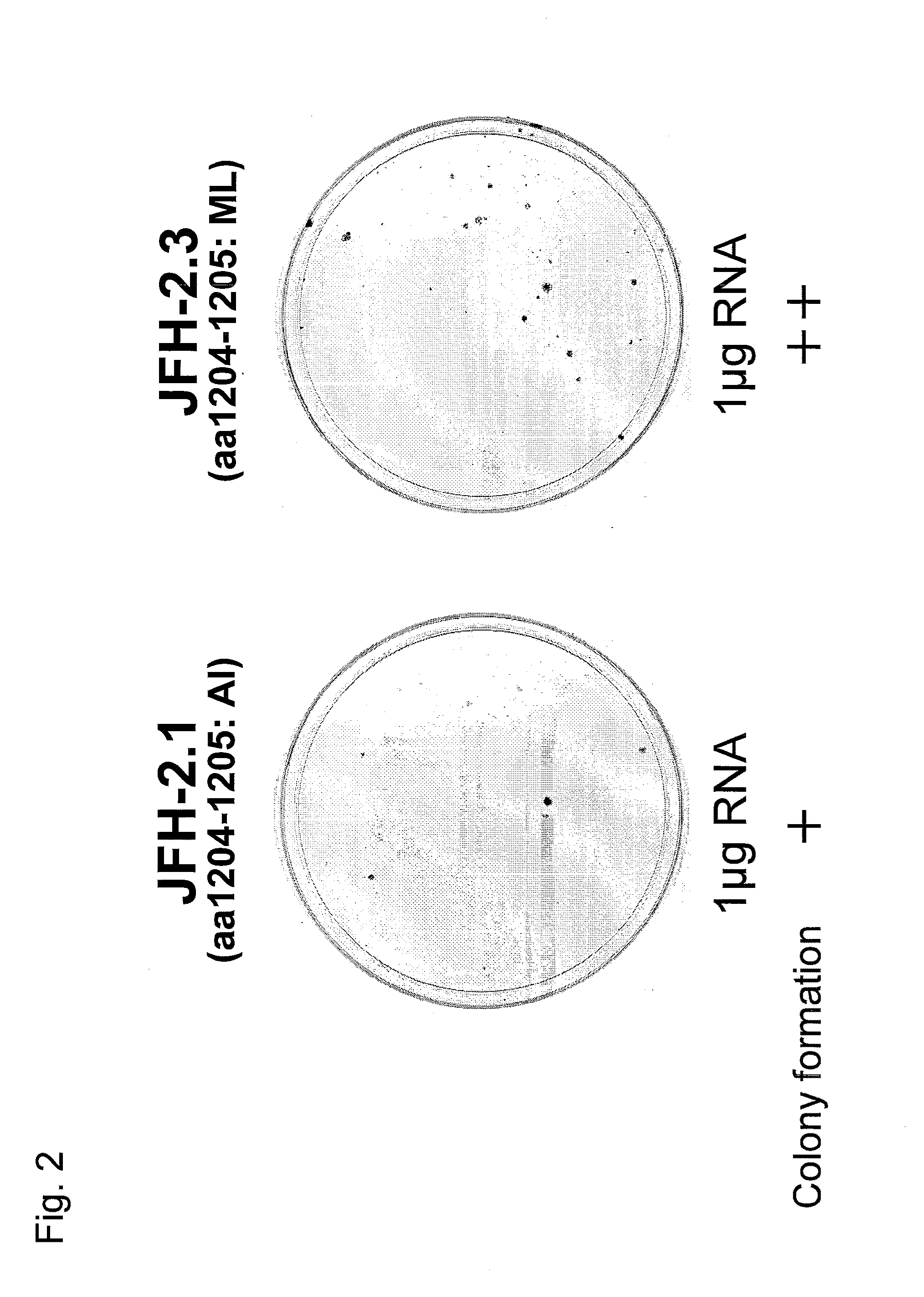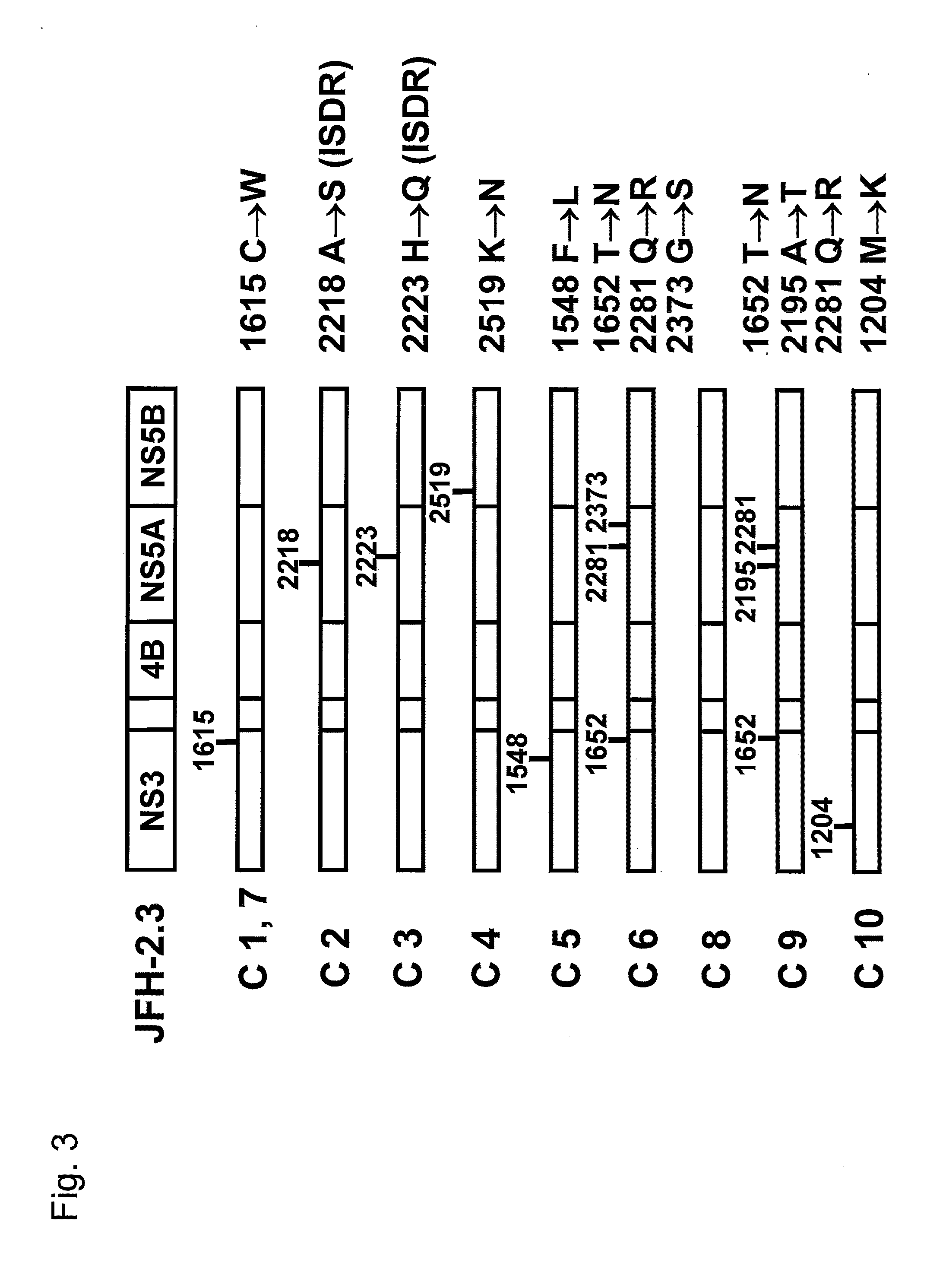Nucleic acid derived from hepatitis c virus and expression vector, transformed cell, and hepatitis c virus particles each prepared by using the same
a technology of hcv and nucleic acids, which is applied in the field of hcv particles prepared using the same nucleic acids, can solve the problems of limited hcv subgenomic replicon rna, inability to infect cultured cells with hcv or replicate the hcv genome in cultured cells, and limited therapeutic effects of only about 60% of all treated patients, etc., to achieve high self-replication capacity and high hcv particle production capacity
- Summary
- Abstract
- Description
- Claims
- Application Information
AI Technical Summary
Benefits of technology
Problems solved by technology
Method used
Image
Examples
example 1
Construction of JFH-2.1 Strain- and JFH-2.3 Strain-Derived HCV Subgenomic Replicon RNA Expression Vectors
[0133]HCV subgenomic replicon RNA expression vectors, plasmid pSGR-JFH-2.1 and pSGR-JFH-2.3, were separately constructed using nonstructural region of the full-length genome clone DNA of the HCV JFH-2.1 strain and JFH-2.3 strain of genotype 2a isolated from fulminant hepatitis patients (FIG. 1) as follows. FIG. 1A shows the full-length genome structure of the HCV JFH-2.1 strain and JFH-2.3 strain.
[0134]Plasmids, pSGR-JFH-2.1 and pSGR-JFH-2.3, were constructed according to the procedures described in the document of Kato et al. (Gastroenterology, 125: 1808-1817, 2003) and WO05028652A1. Specifically, first, recombinant plasmids, pJFH-2.1 and pJFH-2.3, were provided, wherein cDNA encoding the full-length genome of the HCV JFH-2.1 strain or JFH-2.3 strain was inserted under control of a T7 promoter in a plasmid vector pUC19. Subsequently, structural region and portions of nonstructur...
example 2
Preparation of HCV Subgenomic Replicon RNA
[0138]For preparation of HCV subgenomic replicon RNA, expression vectors, pSGR-JFH-2.1 and pSGR-JFH-2.3, constructed as described in Example 1 were each cleaved with restriction enzyme Xba I, thereby preparing template DNA for PCR. Subsequently, each of these Xba I cleavage fragments were incubated at 30° C. for 30 minutes after addition of Mung Bean Nuclease 20 U (total volume of reaction solution: 50 μl) to 10 μg to 20 μg of the template DNA for enzyme treatment. Mung Bean Nuclease is an enzyme that catalyzes a reaction of selectively degrading and blunt-ending the single-stranded portion of the double-stranded DNA. In general, when RNA transcription is carried out with RNA polymerase by directly using as a template the above Xba I cleavage fragment, a replicon RNA in which extra CUGA (4 nucleotides) corresponding to a portion of the Xba I recognition sequence has been added at the 3′ terminus is synthesized. Hence, in this Example, the Xb...
example 3
Establishment of HCV Subgenomic Replicon-Replicating Cell Clones
[0141]Each (1 μg) synthetic HCV subgenomic replicon RNA from the JFH-2.1 strain or the JFH-2.3 strain prepared in Example 2 was mixed with total cellular RNA extracted from Huh7 cells by a conventional method to adjust the total amount of RNA to 10 μg. Then, the mixed RNA was introduced into Huh7 cells by electroporation. The electroporated Huh7 cells were seeded on a culture dish and cultured for 16 to 24 hours, and then G418 (neomycin) was added to the culture dish. Then, the culture was continued while replacing the culture medium twice a week. After 21 days of culture following seeding, viable cells were stained with crystal violet. As a result, colony formation could be confirmed as shown in FIG. 2 for cells into which replicon RNA from either the JFH-2.1 or JFH-2.3 strain had been introduced. The colony formation indicated that a HCV subgenomic replicon RNA had been replicated in the cells.
[0142]Regarding the abov...
PUM
| Property | Measurement | Unit |
|---|---|---|
| structures | aaaaa | aaaaa |
| gene structures | aaaaa | aaaaa |
| resistance | aaaaa | aaaaa |
Abstract
Description
Claims
Application Information
 Login to View More
Login to View More - R&D
- Intellectual Property
- Life Sciences
- Materials
- Tech Scout
- Unparalleled Data Quality
- Higher Quality Content
- 60% Fewer Hallucinations
Browse by: Latest US Patents, China's latest patents, Technical Efficacy Thesaurus, Application Domain, Technology Topic, Popular Technical Reports.
© 2025 PatSnap. All rights reserved.Legal|Privacy policy|Modern Slavery Act Transparency Statement|Sitemap|About US| Contact US: help@patsnap.com



